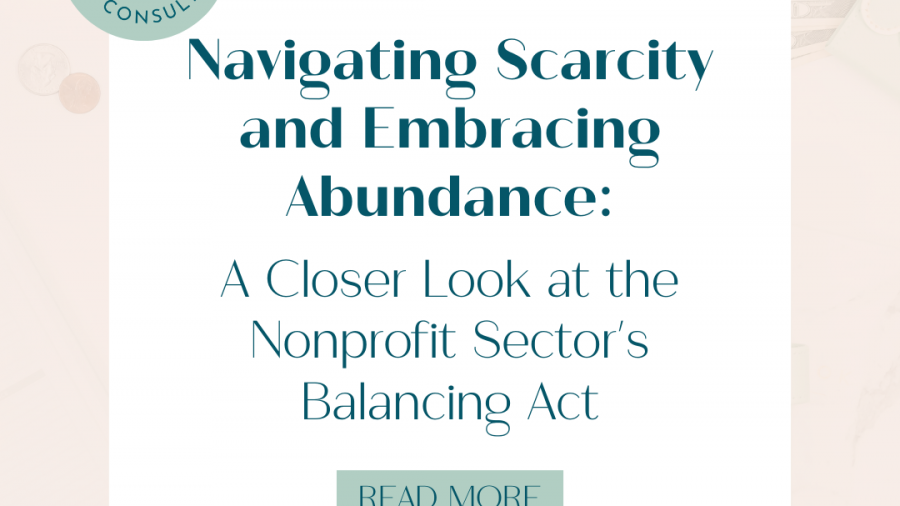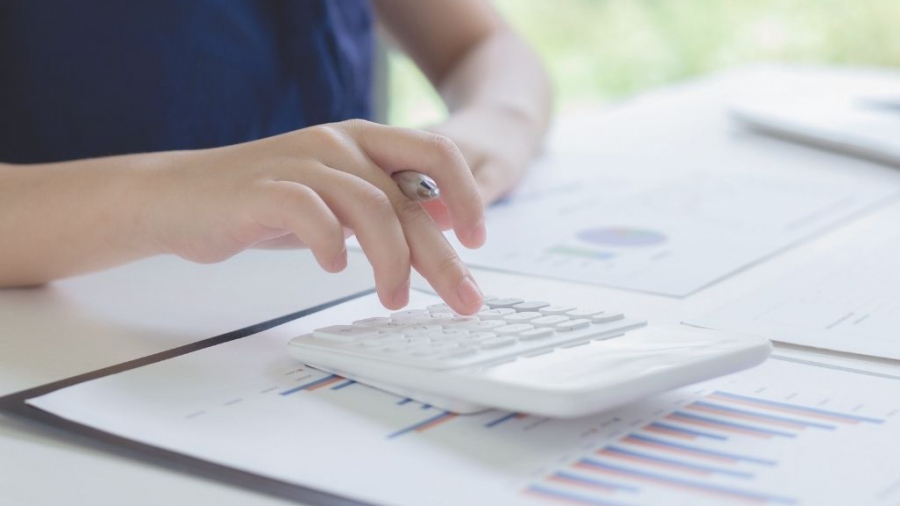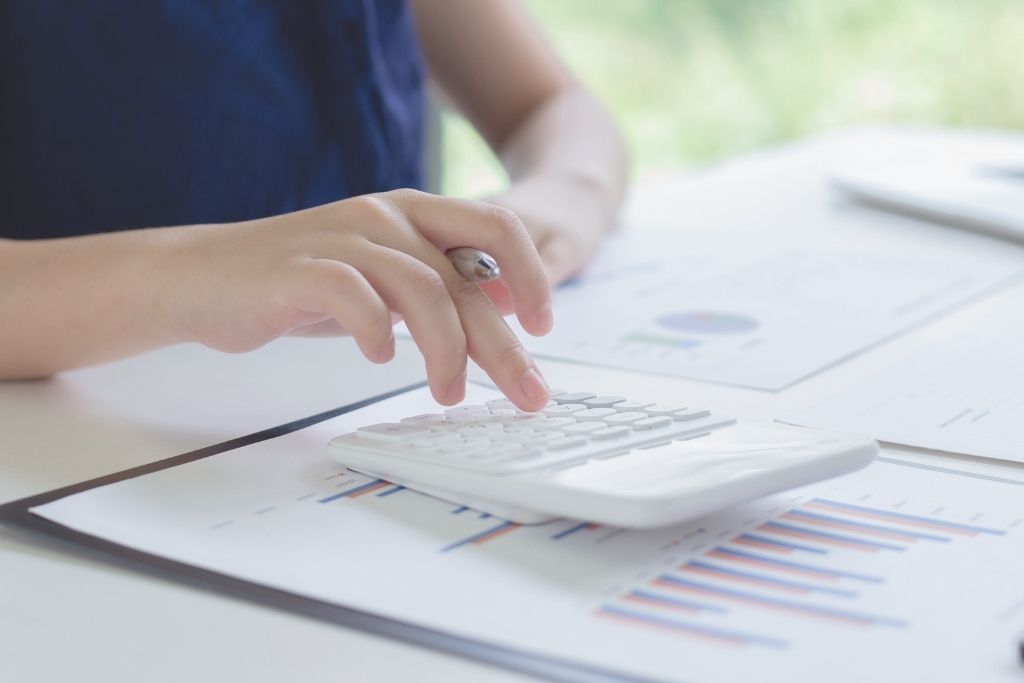IRS 1099 Forms: How To Get Ahead
Who even thinks about IRS 1099 forms this early in the year? Like, don’t we have until the end of January to send our form 1099s?
In an ideal scenario, everybody associated with your company fills out & files their tax forms responsibly, and nobody experiences any crazy tax issues… but believe me, things can go horribly wrong real quick when you don’t prep ahead.
One common horror story is when a contractor goes MIA around the holidays (or even worse when January comes rolling in). Oh! The scrambling that goes into catching up on tax reports after the holiday season… not fun!
So, you really want to start preparing yourself and your organization much earlier (hint: throughout the year), so that you can catch any issues quickly… Because let’s be real for a second, nobody wants to go through a tax season dumpster fire!
[nervous laugh]
Right?
So, what is a 1099 form?
What other types of 1099 forms are out there?
There are actually a lot of other tax forms that fall in the 1099 category, but these are the common ones that most taxpayers use:
-
1099-MISC
This form cover income that falls outside the clause of the other 1099 forms. Money received from prizes and awards are examples of non-employment income. For those of you who fall under the self-employed category, it’s important to remember that you are responsible for paying the taxes you owe even if you don’t get the form from your employer. If the company submits a 1099 form to the IRS, but you don’t receive it for some reason, the IRS will send you a letter (actually, a bill!) saying you owe taxes on the income. Please note that the letter may not arrive in a timely manner.
- 1099-B
The 1099-B is a form that brokers must use when they sell your stock. It includes the sales date, the purchase price of each security sold, and the proceeds from each sale in order to calculate any capital gains or losses you incurred! - 1099-DIV
If you own stock or other securities and receive over $10 in distributions, such as dividends, then this is a must. This includes any type of distribution that was paid on your stocks including capital gain distributions, nontaxable distributes from liquidation sales. - 1099-G
One of the many important forms that you may need to fill out is a 1099-G. This form helps to report information about unemployment compensation, state and local income tax refunds, agricultural payments or taxable grants, etc. - 1099-INT
Financial institutions (e.g. banks, brokerage firms, insurance companies, mortgage companies, credit unions, etc.) must provide this form if they pay the user more than $10 in interest during the year. - 1099-K
The 1099-k form must be filed by companies that made over 200 transactions with an annual gross revenue of greater than $20,000 through third-party payment processors like Google Checkout, PayPal, or Stripe. - 1099-R.
A 1099-R is the form filed when you get a distribution from your retirement plan. This includes IRS, Roth IRA, and 401(k) plans such as an employer-sponsored account which lets you save for retirement with pre-taxed money.
Why do independent contractors need a 1099 form?
An independent contractor counts as someone who is self-employed. That’s because when you enter a contract with an independent contractor to fill a specific role or complete a specific task, they can set their own hours, use their own tools, and even cater to multiple clients or businesses. Since contractors are considered self-employed, you (the business owner) or the (company) do not withhold taxes from their paychecks, because the contractor is solely responsible for paying their own taxes and providing their own benefits.
If a taxpayer hasn’t received the expected 1099 for income earned—even if the business didn’t file the 1099 form—the taxpayer might be able to report it under miscellaneous income. However, it’s best to contact a tax professional to determine the correct way to file for your particular tax situation.
What is the difference between a 1099-MISC form and a W-2 tax form?
1099s and W-2s are tax forms that help report different incomes.
1099-MISC, for instance, is typically used to report payments made to independent contractors (who cover their own employment taxes).
A W-2 form, on the other hand, is used for employees (whose employer withholds payroll taxes from their earnings). Businesses must issue 1099s to any payee (other than a corporation) who receives at least $600 during the year.
Who is exempt from 1099s?
Exemptions are a unique and often confusing part of the 1099 system. This can be frustrating for accountants who spend hours filling out tax documents but give relief to smaller businesses that cannot afford to hire an accountant or fill out paperwork themselves.
Exempt entities from Form 1099 issuance include any individual, organization, company or charity with income below $600 per year; however certain states may have different requirements which will override federal guidelines. It is best to consult a tax expert like a CPA to make sure that your organization is in compliance with tax laws.
Not sure “what’s the difference between a CPA, CFO, CFP?” Then THIS QUIZ is a MUST! In just three minutes, I’ll help you figure out exactly which finance pro you need, no acronyms included!
When is the 1099 tax form deadline for submission?
The deadline is typically January 31st of every year. You can check the official IRS website for more information on when and how to file your tax forms.
What happens if you don’t submit your 1099 IRS tax form?
What’s the worst that can happen if you work on your tax forms at the last minute? Weeeeell… you might inadvertently miss the cutoff and get a tax or an IRS audit notice.
Non-filing of 1099s to contractors is considered a violation of IRS regulations on information returns. Those who fail to comply can be penalized with fines or imprisonment. So, waiting too long to file your 1099s can be a costly mistake. Penalties can range from $50-280 per form, with the maximum penalty reaching up to 1 million dollars in industry fines!
3 Easy tips to get ahead of the tax season and be a rockstar CEO:
- Make a list of every contractor you’ve paid $600 or more this year to date. (Pro tip: QuickBooks Expenses By Vendor Summary report is super helpful!)
- Make sure you have their W9 on file – ask any contractors for the form if you’re missing theirs. (Pro tip: If you use Gusto to pay your contractors, this is all done for you!)
- Keep all W9s in one place (Google Drive, Dropbox, etc) – you will need them in January!
- Bonus: Repeat this process again in early January to capture any new contractors or ones who’ve hit the $600 threshold in the second part of the year.
P.S. Need help with strategizing for next year’s tax season? We are not a CPA firm and do not file personal or business taxes, but we do know of several trusted CPAs and we’d be happy to make an introduction. We do file the Form 990 for nonprofits and know that form like the back of our hands, so feel free to send your questions through our contact form and let’s connect!
3 ways to ensure a smooth-as-butter audit
Are you soaking in the summer sun as much as I am? Here at 100 Degrees, I’m splitting my time between supporting clients and taking as many Zoom meetings as possible outdoors. The weather here in Buffalo is only nice for so long, so I’ve got to take advantage of that sunshine!
Lots of our clients have audits going on right now, and all of this audit work can be a major source of stress for nonprofit leaders. There are a lot of questions, a lot of panicked moments looking for that one missing contract, and tons of uncertainty as to whether or not you’ll “pass”.
But I’ve learned a few things after supporting dozens of audits over the years and want to share how to drastically improve efficiencies and reduce time spent on your audit.
If you don’t yet have an audit, STICK WITH ME! These are best practices you can use to free up time and brain space to focus on your mission and ensure you’re ready for any future audit.
Ready? Here are my secrets to a smooth-as-butter audit!
1. An organized, cloud-based document storage system halves prep time. Many audit firms use online file sharing systems, where they have clearly labeled folders for each item requested, so you can just drag and drop files into each one. This has virtually eliminated all back-and-forth email and helped us to speed up the time to prepare and submit documents. And to make your own preparation as quick as possible, start from day one with an online folder system in Google Drive or Dropbox – create a folder for each month and store all timesheets, receipts, bank statements, reconciliations, etc within that folder for easy reference later!
2. Quarterly reviews throughout the year dramatically decrease prep time. If you’ve ever undergone an audit, you probably know the hot topics and past issues for your organization. Common issues I’ve seen are around cash management and grant restrictions, so I suggest you do a mini internal audit of those hot issues each quarter. One client recently did this, completely solved their issues, and wiped the comment from the management letter!
3. The audit is a team effort, not just a task for the finance team. The audit timeline and goals should be shared across the organization because development, leadership, the board, and programs may all get pulled in at some point. Communicate early and often to get the whole team on board.
What questions do you have for me about the audit? Just click Reply and I’d be happy to answer!
PS – Want more info on how to prepare for a stress-free audit? Check out this article >>> https://100degreesconsulting.com/stressfreeaudit/
Four Tips To Manage Your Email
Do you remember the days when email was exciting? When you’d hear that ding and get excited for a new client or that juicy newsletter from someone you admire? Well, if that once joyful “You’ve Got Mail” feeling has been replaced by email inbox dread, the latest episode of The 100 Degrees of Entrepreneurship Podcast is definitely for you.
Seeing emails pile up can bring on a great deal of anxiety. It can make you feel like you’re constantly behind and you can end the workday with more emails unread than when the day began. But putting productivity on pause is simply not an option when you’re running your business.
But having a plan and a system you use each day is the best way to tackle your inbox with confidence.
In Episode 11 of The 100 Degrees of Entrepreneurship Podcast, we’re talking about managing your email, and here are my four key tips to managing your email inbox:
Tip #1: Unsubscribe to End The Noise
From promo emails to sale notifications things can get pretty crowded. And if you’re living with a personal email and a business email, it can feel like whack-a-mole throughout the day. My best suggestion: but otherwise, get rid of them. If you’re busy and not buying, just save your absolute favorites and ditch the rest.
Trust me, you won’t miss the clutter. And if you miss something you can always resubscribe later. No worries!
Tip #2: Only Check Your Inbox When You Can Respond
Whether it’s off-hours, you’re out with your kids, or you’re in the zone on your latest project, there are times when it’s just going to stress you out to check your inbox.
And that’s okay.
My suggestion here is that you consciously decide that you’ll check your email at a particular time each day. If that’s not how you roll, then I’d encourage you to decide you’ll only check your email when you can respond to it. This skips the anxiety or the “writing the reply in my head” feeling you get when you feel the need to respond right away.
Multitasking and answering emails can lead to miscommunication or missed opportunities so the decision to check your email when you’re focused on that specific task is the way to go.
Plus, you get to show up more fully in whatever you’re doing which is a big impact booster for sure!
Tip #3: Batch Answer Similar Emails
Want an easy way to stay focused when writing or replying to emails?
Try this trick: Go through your email and answer or write emails that are related in some way.
This may mean responding to all emails from clients at once and then moving on to emails from team members and then responding to potential leads.
When you do this you’ll eliminate chunks of your email box at once, build momentum, and feel the progress you’re making.
And, you’ll find it easier to write when you’re dealing with the same audience or subject matter. So you may discover that this makes you an email reply superstar who gets more done in less time just by focusing more effectively.
Tip #4: Use Folders And Filters
Not everything in your email box needs your attention. So, using folders and filters is a great way to make delegation a breeze.
If you get an email that someone on your team needs or should see you can have those emails filtered over to them or create a folder where everything for that team member can live when they’re ready to dive into the inbox.
*Bonus Tool Tip: Schedule emails with Boomerang
I think we’ll all agree that healthy boundaries around your time are essential. But there might be some late nights and weekends where you are checking or answering emails.
One way to maintain your time-related boundaries when those instances occur is to use Boomerang. It’s a plug-in that allows you to schedule emails to be sent at a different time or to have an email you received boomerang back to you at a later date so you don’t forget about it.
As an entrepreneur, you’re not always living a 9-5 life but this tool can help you maintain boundaries as if you are. And those healthy boundaries can really help everyone from you to your clients to your team feel comfortable and confident as they interact with you.
I can’t wait to celebrate all of your Inbox Zero accomplishments!
P.S. In case you missed it, here’s a quick review of the latest podcast episodes!
Episode 8: How Data Can Double Your Income and Not Your Workload with Jennifer Grayeb
Jennifer Grayeb is the CEO of The Nimble Co, a consulting group focused on helping online business owners better understand their numbers so they can make data-driven and profit-generating marketing decisions.
Jennifer and I talked about how to skip vanity metrics and use data to make more money and better decisions in your business.
Episode 9: 4 Strategies to Build a Sustainable Business
In Episode 9 I’m sharing four of my go-to strategies for building a business for the long haul. These strategies are ones that my clients and I use to grow our impact and our bottom lines every day and they’re things you can implement in your business right now.
Episode 10: Powerful Mindset Shifts to Bring More Abundance Into Your Life with Kari Elizabeth Enge
Kari Elizabeth Enge Kari Elizabeth Enge is the founder and editor in chief of Rank & File Magazine, a publication that shares authentic, vulnerable advice on building a social impact business. She’s also a coach for purpose-driven entrepreneurs. Rank & File Magazine has featured notable thought leaders and entrepreneurs such as Simon Sinek, Jessica Honegger, Liz Forkin Bohannon, Caitlin Crosby, and more.
In our conversation, we explored the brain trash we all need to take out to grow as people and as business owners. Her guidance offered practical tips for making these shifts so you can make a real impact in the world around you.
There is such thing as a bad surprise
You will not achieve your goals if you don’t make them a monthly habit.
Not quarterly. Not annually. Monthly.
If you are surprised when your tax accountant tells you how much money you made last year when they’re preparing your taxes, you’re doing business wrong.
How much you make…
How much you spend…
How much cash is in the bank… 💰
…Should NEVER be a surprise! 😲
Savvy business owners who grow to 6- and 7-figures look at their numbers every single month – both what happened last month and their forecast for next month – so there is no surprise.
But what should you actually DO every month?
1. Do your bookkeeping. Make sure your numbers are accurate and reconciled.
2. Review your Profit & Loss statement and key metrics.
3. Update your projections for the rest of the year.
Have you ever been surprised by the numbers in your biz? Grab our Profit Playbook to build your own plan and never be surprised again! http://100degreesconsulting.com/profit/
If your Profit Playbook is helpful, please share on Instagram and tag me @stephanie.skry
You’re going to hate this idea
Okay, friend.
I’m going to share a time when I had hit a wall.
I was trying to schedule an important meeting and the only time that was free was in the evenings after my girls were in bed. I ended every single day with a longer to-do list than when I started and I dreaded clicking that Zoom link yet again.
Intentionally working “after hours” was never part of my business plan.
My schedule had become filled with things that I didn’t like doing and that I wasn’t good at, and I knew something had to change.
Instead of metaphorically burning the whole business down (although I threatened it!), I decided to track my time for a few weeks and see where it was going!
Here’s the thing:
Time is an input to results.
We all want results, like hitting a certain revenue goal or serving a certain number of people. There are things we can do to help those results along, and spending our time is one input to our results.
So I looked back at my calendar for the previous five months to categorize and assess exactly where my time was going.
The results?
I spent about 2.5 days a week on calls! I got instant clarity on why I was feeling crunched.
Are you feeling the calendar crunch too? I suggest you do a time study!
Just like analyzing your finances is worthless unless you’re going to use the information to make smart decisions, the time study was pointless unless I actually did something about it.
I started batching calls, blocking time for no-meeting days, and adding rest and creative work time into my schedule so my weeks were more conducive to achieving my goals.
Are you investing your time in what activities will get you closest to your goals?
PS – Your weekly schedule should be a direct reflection of your biggest goals, so make sure that your time is spent on your goals!
Follow along on Instagram to see how my weeks look >>> @stephanie.skry
Are your habits aligned with your goals?
Welcome to February, the month where New Year’s resolutions go to die!
***thinks of 25 year old Stephanie who made long rambling lists of things to accomplish in 365 days, like “learn to sail”***
Here’s what I’ve learned:
Everything doesn’t need to get done immediately.
True instant gratification doesn’t exist when it comes to our big goals.
For example, I thought about starting a podcast last year but knew that there was important groundwork I needed to lay before doing that. Rather than rushing it and releasing an okay version of the podcast just to check it off a list, I decided to wait until I was ready to do it right. (Hint, hint, exciting things coming!)
I’ve learned that little steps that become daily habits are much more effective to achieve your goals and have a bigger impact. And sometimes the little steps are actually just daily habits that we want to cultivate that will eventually add up to a much bigger impact.
When I wrote this, I went back and looked at my daily routine over the last five years and it has shifted and changed as my goals and priorities have changed. But the common thread is that my routine is always aligned with my goals.
Right now, my daily routine includes:
- Exercising first thing every morning
- Reading before bed
- Drinking at least 64 oz of water
- Tidying my workspace and the rest of my home
- Writing in a journal
These daily habits keep me grounded, calm, focused, balanced, in control, and growth-minded. It’s like a mini checklist towards achieving my goals.
If your money or finances are part of your goals this year, your daily routine might include:
- Checking your bank balance
- Reviewing your forecast
- Journaling about any mindset blocks
- Check in with a friend
- Practice self-care
PS – Daily routines are mini steps towards our big goals, so make sure that your days look like where you want to go. Want bite-sized pieces of content like this? Follow along on Instagram >>> @stephanie.skry
The 100 Degrees Consulting 2020 Client Wins
Unprecedented. Challenging. Tumultuous. Uncertain.
We’ve heard just about every adjective to describe the year 2020, and in some ways, it’s exciting to bid adieu to a year that was weird and hard, and welcome in what we hope will be a fresh start.
For me, while there were many challenging moments, like figuring out how to run a business with a preschooler and little baby at home without childcare for several months, it was a year filled with opportunity and abundance. Personally, I’m ending the year with incredible gratitude and love for my family, my team, and my clients. (Want to read my full 2020 recap blog post? Click here )
My team and I spent some time going through our entire client portfolio to see what wins they all experienced this year too, and it blew me away so I thought I’d share with you. Sharing these wins is, in no way, meant to take away from the tough things that many people experienced this year too – illness, death, depression, loneliness, fear, insecurity, poverty, injustice – but I often find hope and inspiration when I see others’ successes and I hope you will too.
Without further ado, the 100 Degrees Consulting 2020 Client Wins:
Many nonprofits were hit incredibly hard this year. Uncertainty in the market caused a significant drop in charitable donations, and many organizations could not operate their programs because of the pandemic. But nonprofit leaders are some of the more adaptable and resilient people I know.
- Landed partnerships with major companies to help support programs
- Secured significant grant funding, some specifically for COVID relief and others for general operating and program support, ranging from $10k to $3M
- Adding staff to help with grant writing, fundraising, and operations
- Increased net income by up to 100% from last year
- Pivoted in-person experiences, programs, and galas to virtual events that were highly successful
- Acquired a $150k low interest SBA loan to support production of artisan goods
- All of our nonprofit clients received fully forgivable Paycheck Protection Program funds to help support payroll expenses during Q2 and Q3
Businesses didn’t fare much better across the US. As we sadly watched small businesses in our local towns close their doors, many online businesses did really well in a new reality where we’re all spending our time behind our phone and laptop screens. Entrepreneurs and small business owners are innovative and determined and our clients had some major wins:
- Grew net income by 100%+ from last year which means these business owners were able to save for houses, increase their charitable donations, and grow their team – what an amazing ripple effect on a whole community!
- Pivoted sales outlets; moving from in-person events to online, from online to strategic shop locations, from Facebook advertising to organic reach, from organic avenues to Facebook advertising. So many leaders tried new things this year that worked!
- Added new team members to keep up with increased workload
- Acquired new companies to help further expand their reach and support their mission
- Opened retirement accounts and began contributing monthly
- All of our small business clients received fully forgivable Paycheck Protection Program funds to help support payroll expenses during Q2 and Q3
I move very quickly, too quickly sometimes, and forget to celebrate the wins, no matter how big or small. So before diving directly into the new year, I am celebrating our client wins across the board and thinking about the words that describe the amazing leaders we work with:
Resilient. Innovative. Adaptable. Creative. Determined.
What was one of your favorite wins in 2020, big or small?
(Are you looking to set yourself up for stability, clarity, and success in the new year? First, download our Profit Playbook for a template to help you easily visualize your numbers, then schedule a call to chat with a CFO! Click here to get on our calendar)
2020 Year In Review
My word for 2020 was expansion. I planned to expand our client portfolio, expand our network through speaking engagements around the country, and expand my family’s adventures by taking our new family of four to Switzerland.
Then the world shut down and life was canceled.
But I didn’t cancel my word of the year.
What you focus on expands is written on the white board in my office and I’m reminded of my word of the year daily.
And despite the pandemic, it actually shaped up into a great year.
Impact
100 Degrees Consulting is represented across the globe! We have clients all over the United States, Canada, Haiti, Iraq, Kenya, Burundi, Rwanda, Uganda, Ecuador, Panama, the Dominican Republic, and Nicaragua!
Their missions are what keep us coming back to the laptop and the spreadsheets every single day. Knowing that our work to help keep these companies and nonprofits financially sustainable will impact the lives of probably millions of people around the world is all I need to get up every day!
Speaking
We were so privileged to share our message far and wide. Our mission is to help leaders better understand and use their numbers to help them increase their impact and income, so these webinars, presentations, and talks are our main way of doing that. I spoke about:
Storytelling with Financials
Budgeting: How to Build Your Roadmap to Growth
Strategic Planning: Building Your 2021 Strategic Roadmap
How to Create a Monthly Finance Routine
And sent dozens of emails, partnered with many companies and other entrepreneurs, and wrote dozens of blog posts. There was no shortage of information coming from my brain into the hands of purpose-driven leaders!
Resources for Our Community
In early 2020, I was working with my speaking coach and developing a talk that I was slated to give at a conference for mom entrepreneurs and influencers. In the midst of our brainstorming session, she asked what type of services I have to offer the business owner who isn’t ready to bring a CFO on board but desperately needs financial advice, accountability, and templates to help them manage their numbers. I told her we had a free template, but that was it, and she immediately suggested that we create a membership.
And thus, The Entrepreneur’s CFO Corner was born! We launched this membership in May and 20 amazing purpose-driven leaders joined us. Inside the membership, we help leaders go from scared and confused to energized and confident in their numbers through CFO support and accountability, training, and templates. It has been a huge resource to many entrepreneurs and a fun experience for us too!
Investments
While 2019 was a year of internal capacity building, 2020 was truly a year of expansion.
Team. I invested heavily into our team and client success by adding 3 new CFOs, an Operations Director, and a Marketing Director. We’ve built incredibly strong project management systems, client onboarding systems, and improved our infamous finance workbook that we use to help our clients see into the future of their businesses.
Website. While our old website made me nostalgic for the humble beginnings of 100 Degrees Consulting, I knew it was time for an upgrade. We hired a top notch branding firm to make my vision for this company come to life and then had our brand new website built. It was a massive undertaking but we love the end result!
Treadmill. I talked a lot this year about removing all barriers to success and for me, that meant having a treadmill in my home so I could exercise regardless of schedule, pandemic, or time of day. It arrived in October and I am literally excited for my 5am run every day!
Personal
Time. Like everyone else in the world, 2020 was a sweet time for our family. We watched my baby grow from a newborn into a toddler, got creative with activities for our preschooler, and completed more puzzles than we had in our entire lives (no joke). We baked a lot, spent every minute of our summer outdoors, and planned pandemic birthday celebrations. Nothing was as I had envisioned it, but I’m grateful to have spent every single minute of my two little girls’ lives with them this year.
Home. We’ve done a ton of small and medium-sized home improvement projects to make this home exactly how we want it, and have plans for a big kitchen renovation in 2021. We made a decision that we will be staying in Buffalo for the next 10 years or so – if you know our moving history, this is a huge deal for us! – so making our house the dreamy, inspiring place where we spend our time is a major priority.
Legacy. We finally invested in a financial planner for our family. Although I’m a CFO, I believe it’s always wise to bring in external, expert eyes, to help you see what you may have overlooked and bring a new perspective. Our financial planners have helped with risk management, insurance, contingency plans, as well as the fun stuff – creating a plan to help us invest in real estate in the next year!
What’s Coming in 2021
It’s probably safer not to plan too much of 2021 if we’ve learned anything from 2020, but I can safely say that improving the services we deliver to clients is on the top of the list. And hey, that’s totally pandemic-proof!
I’d also kind of like to start a podcast…I have lots of ideas and even sometimes pretend to do my podcast intro when I’m alone in the car! Stay tuned…
Wrapping Up
If you’ve been following along with our journey, or are a part of our journey (hello clients, members, partners, and friends!), THANK YOU. I am so incredibly grateful for the community that we’ve built over the last five years, the knowledge that’s been shared, and the lives that have been changed, and can only imagine what the next five will bring.
What’s coming up for you in 2021? Leave a comment below – I’d love to hear!
You can see our past Year in Review posts here! 2015, 2016, 2017 (Must have skipped this one! I blame it on moving from Ohio to New York in November), 2018, and 2019.
How to Set Goals for Your Nonprofit Organization
As originally posted on nonprofitinformation.com
Many nonprofit leaders are hesitant to create major goals this year, given the instability and uncertainty across the country and in our industry. The fundraising landscape has changed drastically in the last year as donors are reconsidering priorities, so nonprofit leaders are being forced to pivot and adapt constantly.
It may seem easier to stay the course, aim low, and hope for the best in terms of fundraising and programmatic objectives. However, it is vitally important, now more than ever, to create goals for your organization.
What you focus on expands.
Goals help us give regular focus to the end result we want to achieve. When we institute goals, we naturally steer focus there, which drives success.
A big goal without a tactical action plan is not likely to be successful. We need to understand the smaller steps that lead to a larger goal. So the process and plan we discuss below gives you a roadmap to get from where you are now to where you want to be and create the impact you want to achieve.
Goals may look different in each season, but the process of setting goals in your organization remains the same. Here are the five steps your organization should consider to set a strategic plan for the year that you will actually follow and achieve.
- Shift your goal-setting mindset. Rather than thinking of your goals, strategic plan, or budget as rules that you must live by, think of them as a flexible roadmap to help you carve a path to your mission and vision. Instead of creating goals rooted in scarcity (e.g. We can only raise $100k this year so let’s see how much we can cram into that budget), create goals rooted in abundance (e.g. We need about $250k to operate the organization effectively and run our programs, so let’s figure out how to raise $250k). Remember, your goals should be a flexible roadmap to abundance!
- Format your goals for success. A goal without a plan is just a wish, and a list of wishes won’t get your organization very far. I recommend using a template that breaks down your biggest vision into achievable tactics so you can look back on the year knowing you’ve accomplished it all.
-
- This starts with your big picture vision – in three years, where do you want your organization to be?
- Then comes 3-5 strategies to help you achieve that vision – what are the major initiatives you’ll need to accomplish to get you closer to the vision:
- Finally are 3-5 tactics under each strategy to actually get things done. These are SMART (Specific, Measurable, Attainable, Relevant, Time-Bound) and will comprise your to-do list throughout the year.
- Align your goals and your budget. Your budget and goals must work together. You don’t want to set out to achieve some lofty goals then realize you didn’t budget for any of the resources you’ll need to actually achieve those goals. Review your goals, determine exactly what resources you’ll need to accomplish them, and include those in the budget.
- Involve the team in goal-setting. When nonprofit leaders involve their teams in goal-setting and are transparent about the direction the organization is going, the team gains a greater sense of ownership for the success of these goals. When your team has a greater sense of ownership, they will be more engaged and committed to accomplishing the goals. But how do you actually involve your staff?
-
- Create teams either by department or cross-department, depending on the size of your organization
- Set parameters for the team so the goal-setting process doesn’t become a wishlist exercise. An example is: What are our three most important strategies for next. year?
- Bring the team’s work back to discuss as a larger group and incorporate suggestions into the organizational goals.
- Roll out your goals. Many organizations fall into the habit of setting ambitious goals, getting the team fired up about them, then promptly forgetting about them until it’s time to set goals once again. This is a surefire way to not accomplish the impact you want to have. Here’s what to do instead.
-
- Share your goals with the entire team. Even if they didn’t participate in the goal-setting process, share your vision, strategies, and tactics with the entire organization (board too!) so you can get excited together about where you’re headed and hold each other accountable.
- Make your goals visible. Instead of printing them out, putting in a binder, and filing that binder away for the year, hang your goals on the wall! Give each team member a laminated copy to hang at their desk. Put them in the office break room.
- Hold everyone accountable. Report on your goals at your staff meetings at least quarterly, so everyone understands the progress and how they can contribute to the organization’s success.
Now that you know the five steps to creating goals for your nonprofit organization that will actually help you make the impact you want to have this year, it’s time to implement. The beginning of a new year, when you’re also creating your budget, is perfect timing to set these goals, but starting fresh anytime is okay.
Stephanie Skryzowski is a Chief Financial Officer that helps purpose-driven leaders better understand and use their numbers to make smart decisions and grow their impact. She is the Founder and CEO of 100 Degrees Consulting which provides CFO and bookkeeping services to nonprofits and purpose-driven businesses around the globe. When she is not crunching the numbers in Excel, Stephanie is hiking and exploring with her husband and young daughters.

























